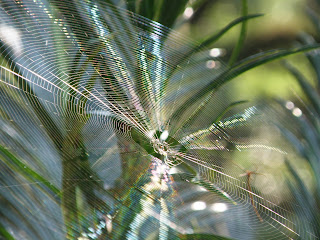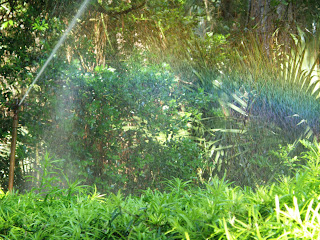The photo above shows a chunk of scalloped ice, about 65 ft (20 m) in width that broke off from the Sawyer Glacier near Tracy Arm Fjord in southeastern Alaska. Note the pure blue color emanating from within the “chasm.” The mechanism responsible for producing this robin’s egg blue color, as well as the blue color in deep snow, is essentially the same as that giving deep water its blue color. The longer wavelengths (yellow and red light) present in the incident white sunlight are preferentially absorbed by ice crystals. As a result, what we see is what’s not absorbed -- reflected light that’s dominated by the green and blue portion of the spectrum. In general, the thicker the ice the greater the absorption, and thus the bluer the color. Though this color may look sky blue, Rayleigh scattering causes the colors we see in the sky on a clear day, not absorption and reflection by air molecules.
The melting patterns on this medium sized iceberg look as if someone has scooped out the ice with a scallop shell. So-called "spontaneous pattern formation" is ubiquitous in nature. The particular mechanism inducing these undulations may involve local melting of parts of the surface, which grow locally as a result of a feedback mechanism. For example, perhaps there’s an initially small and shallow depression that creates a region of shadow, outside of which more melting occurs, changing the shadow boundary, and so on. Photo taken in June 2011.












